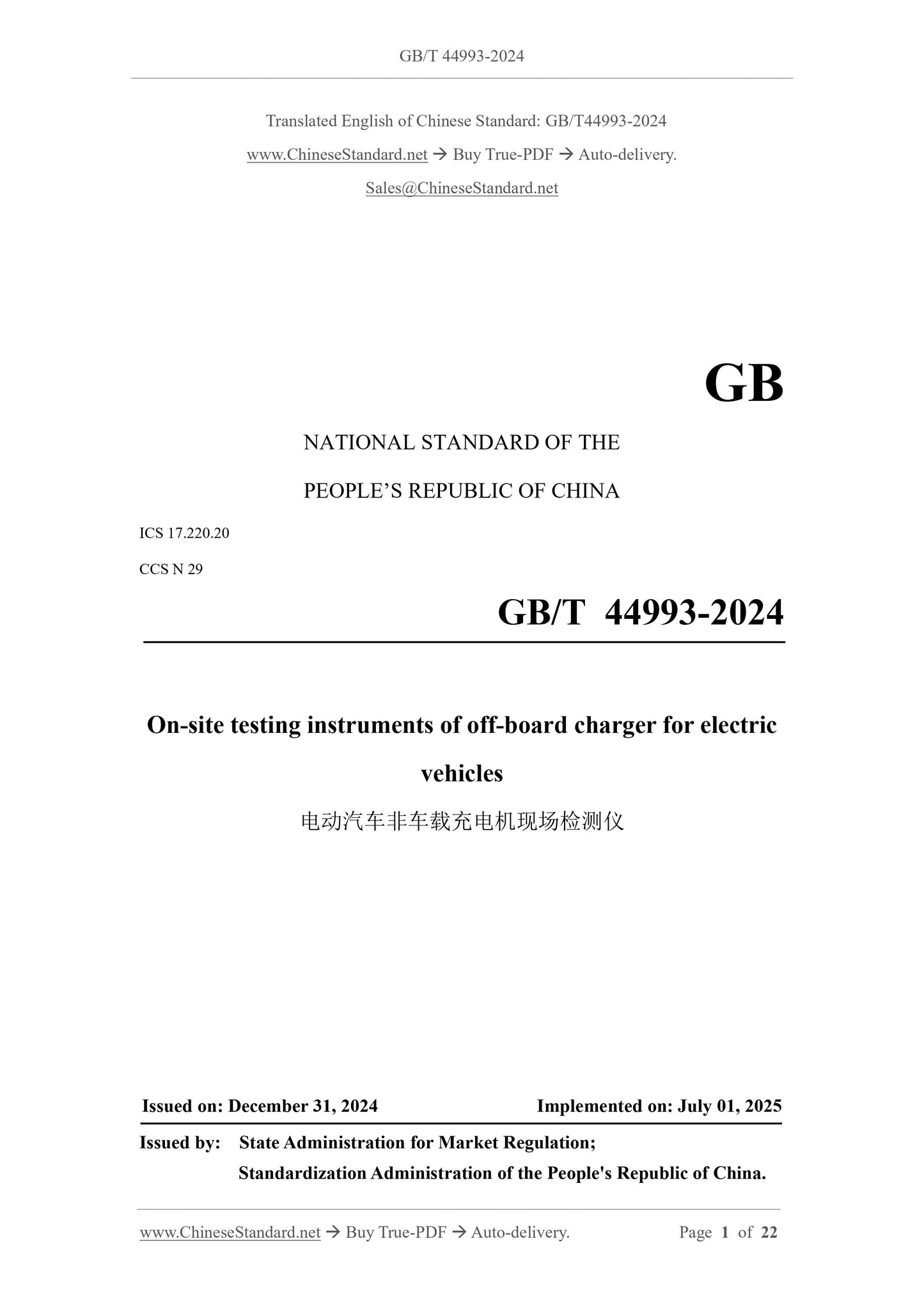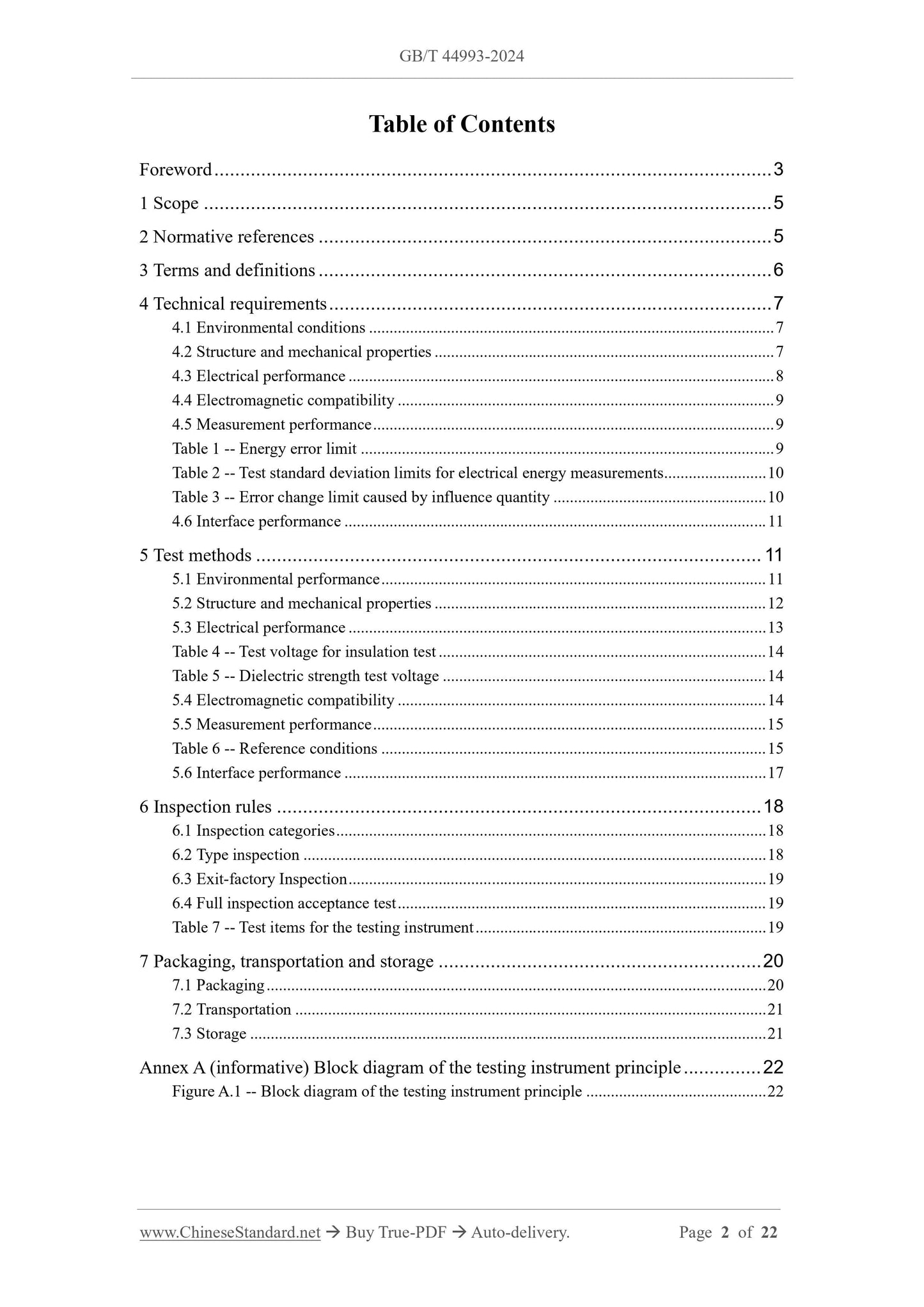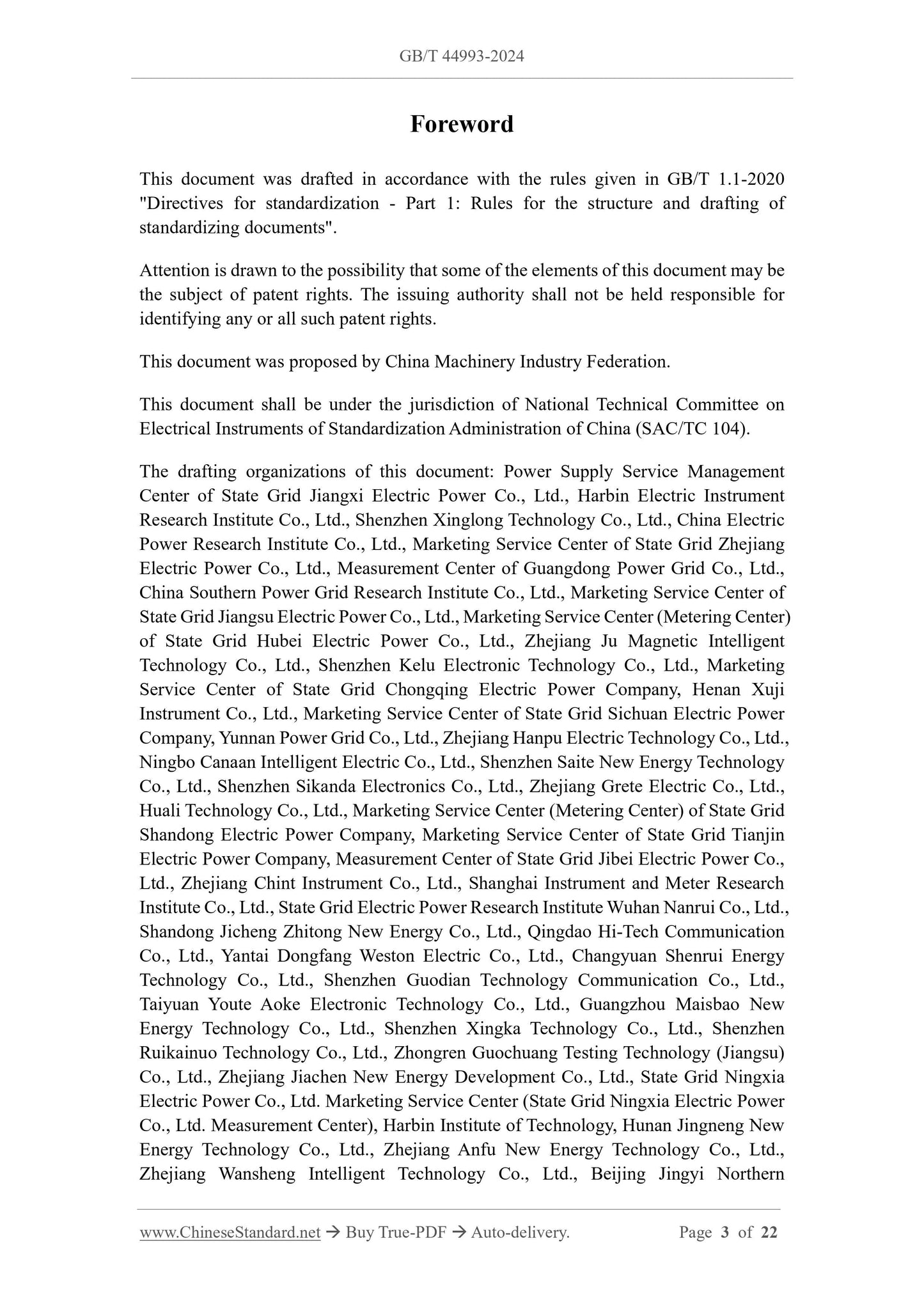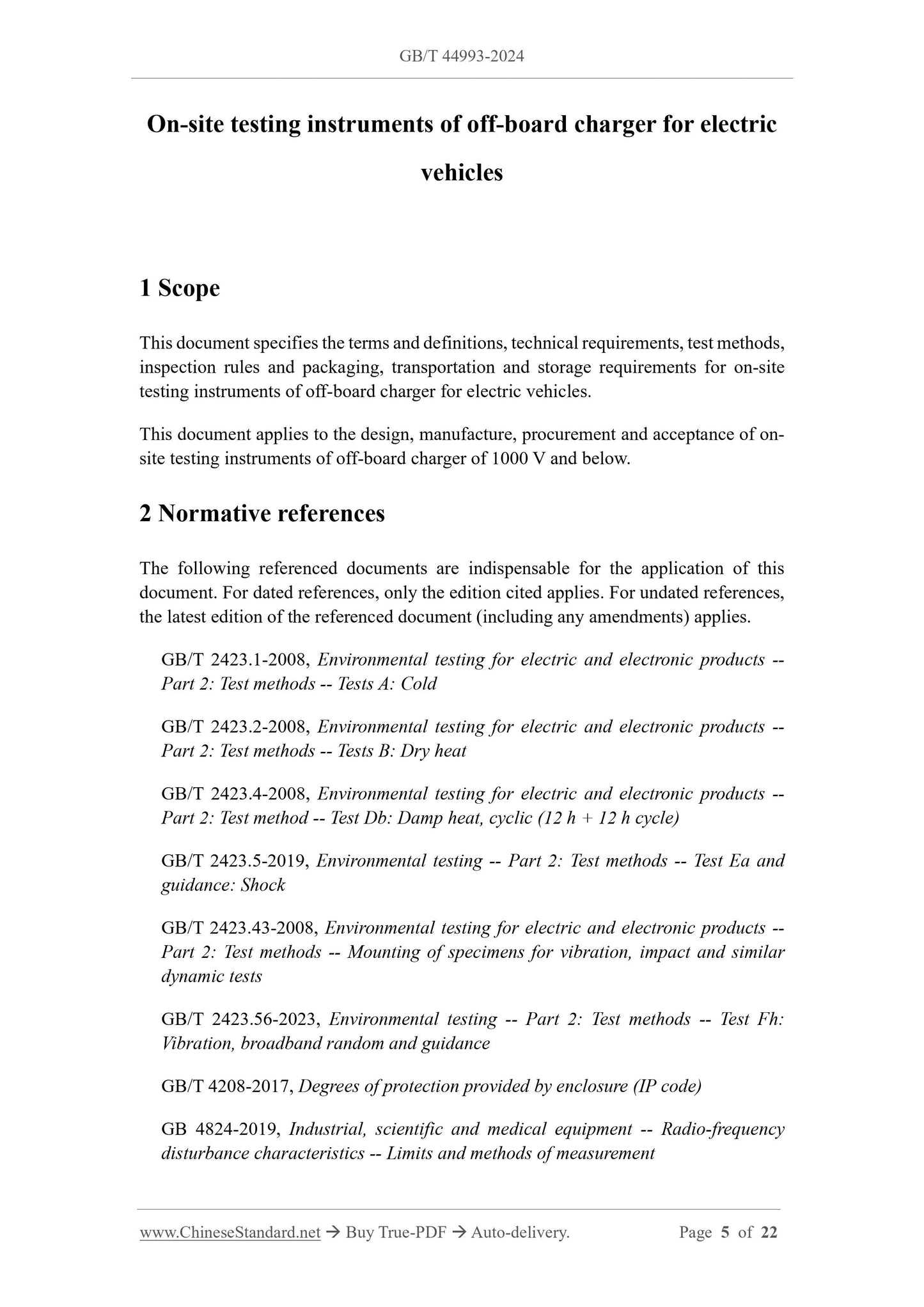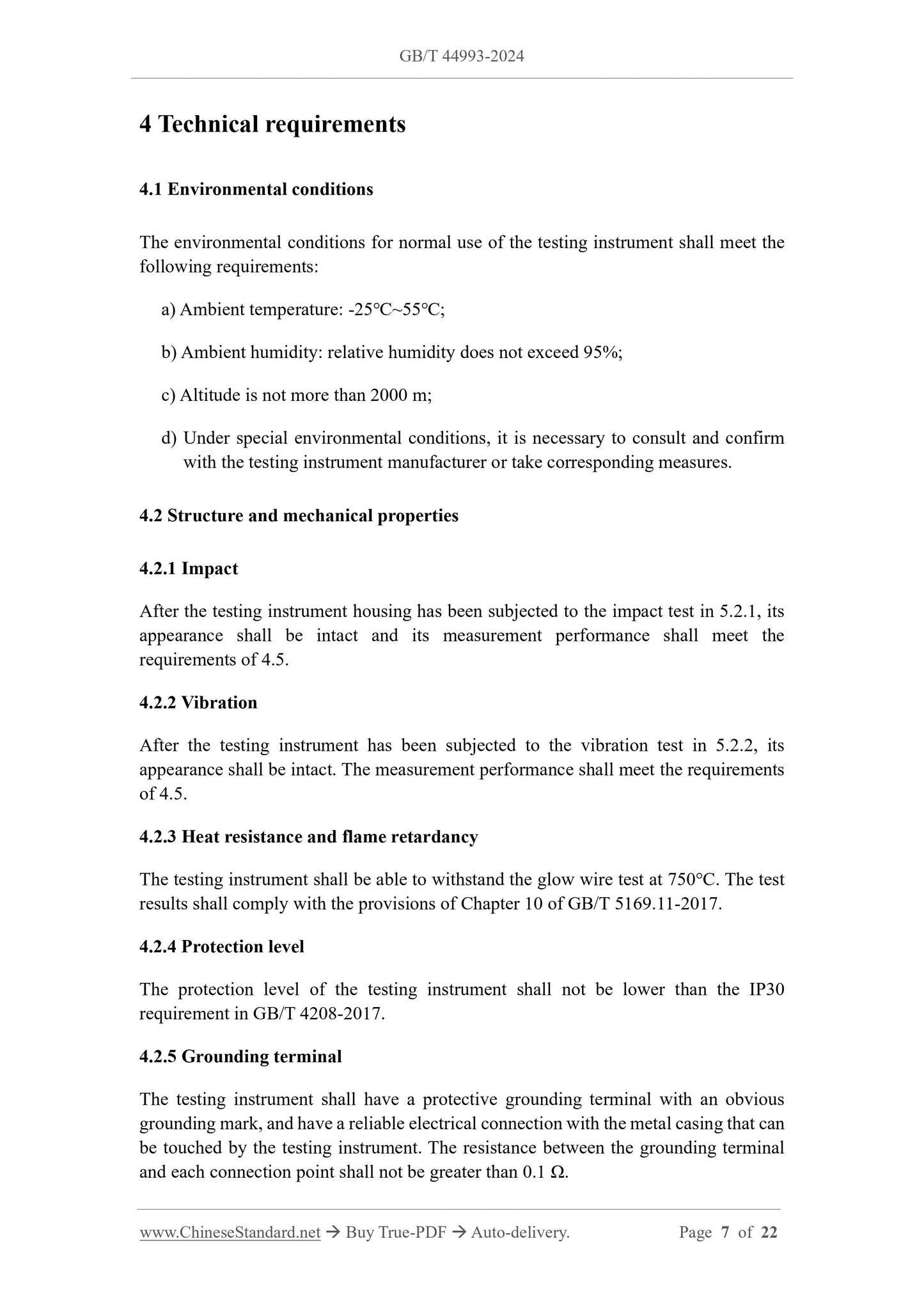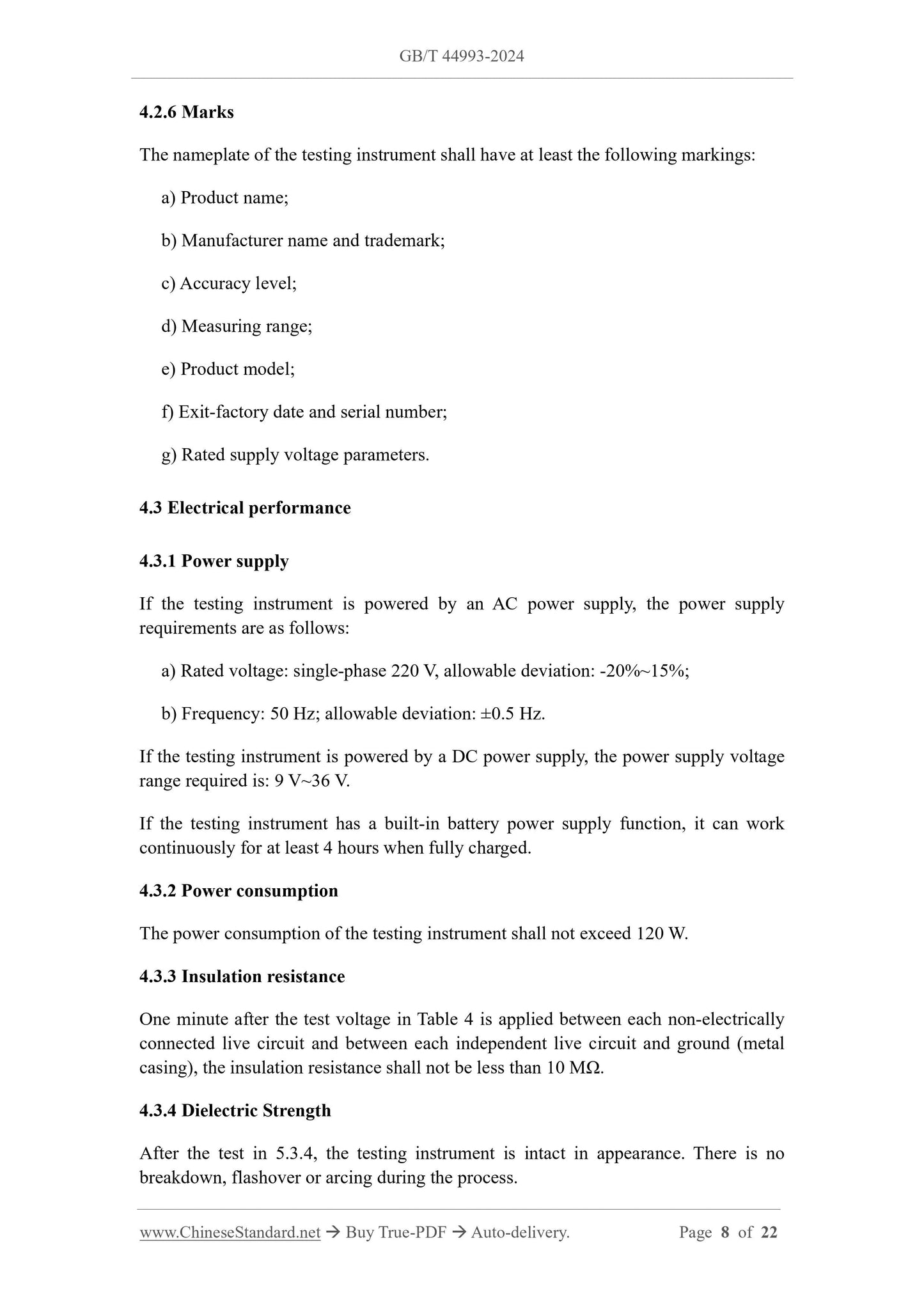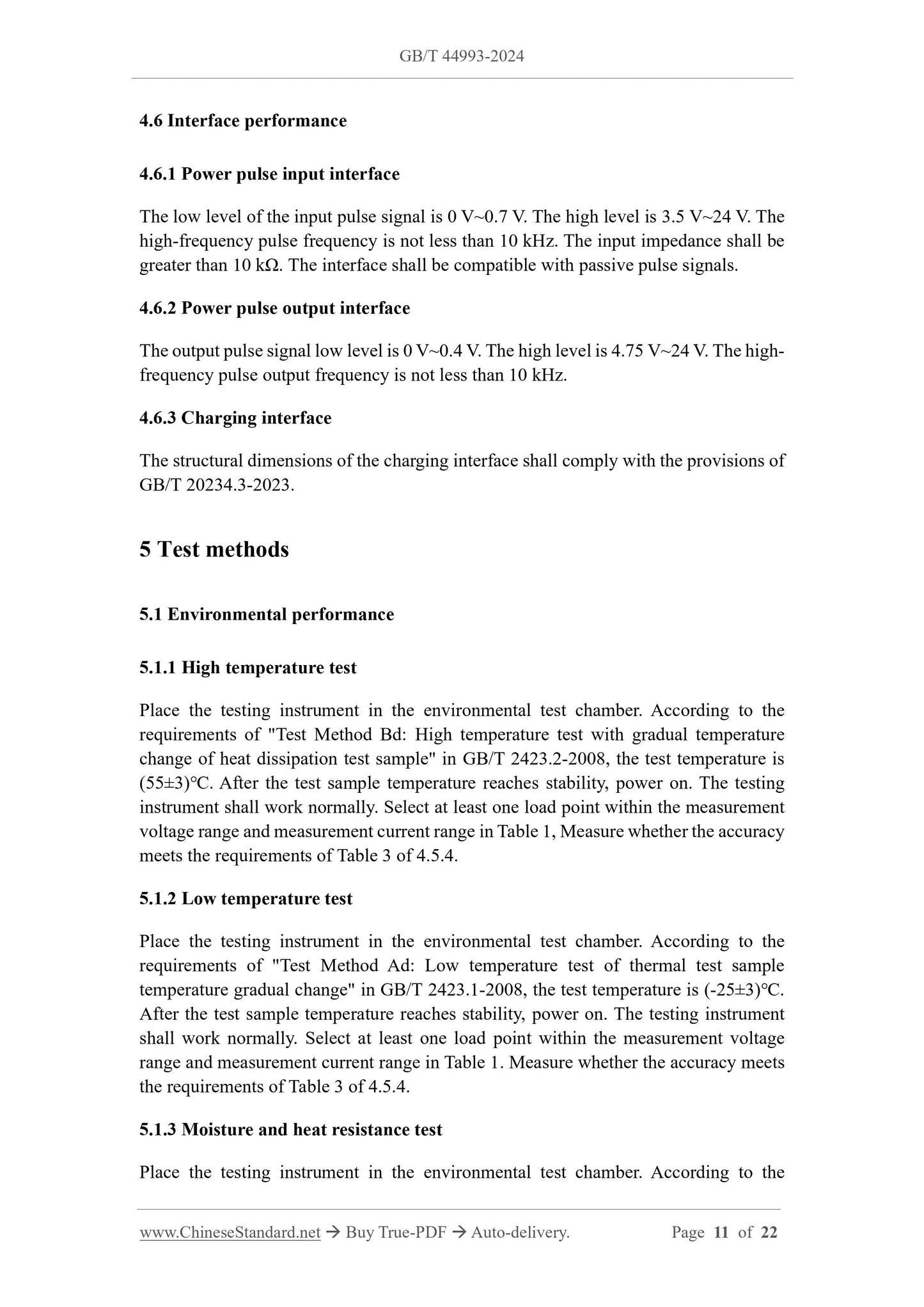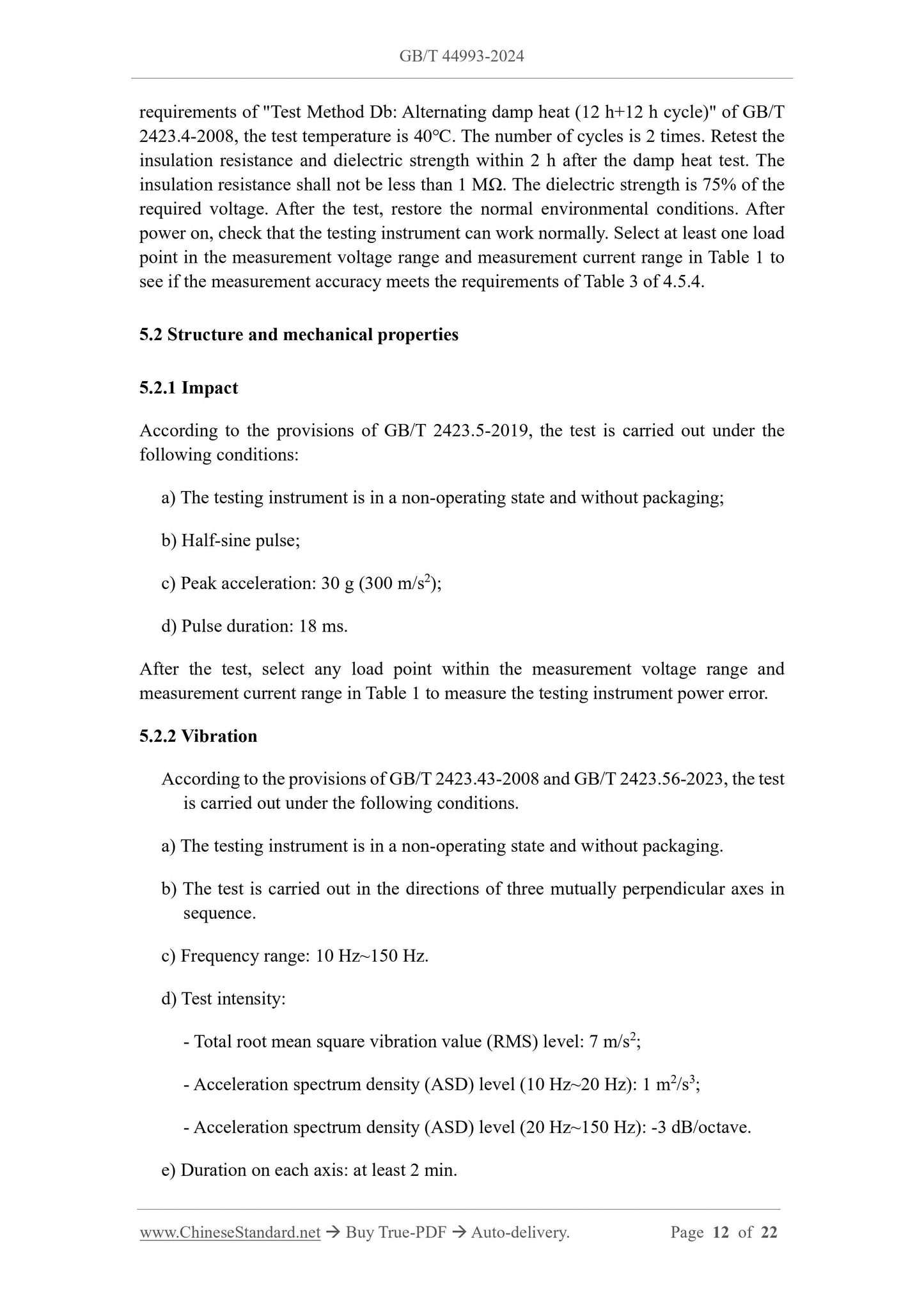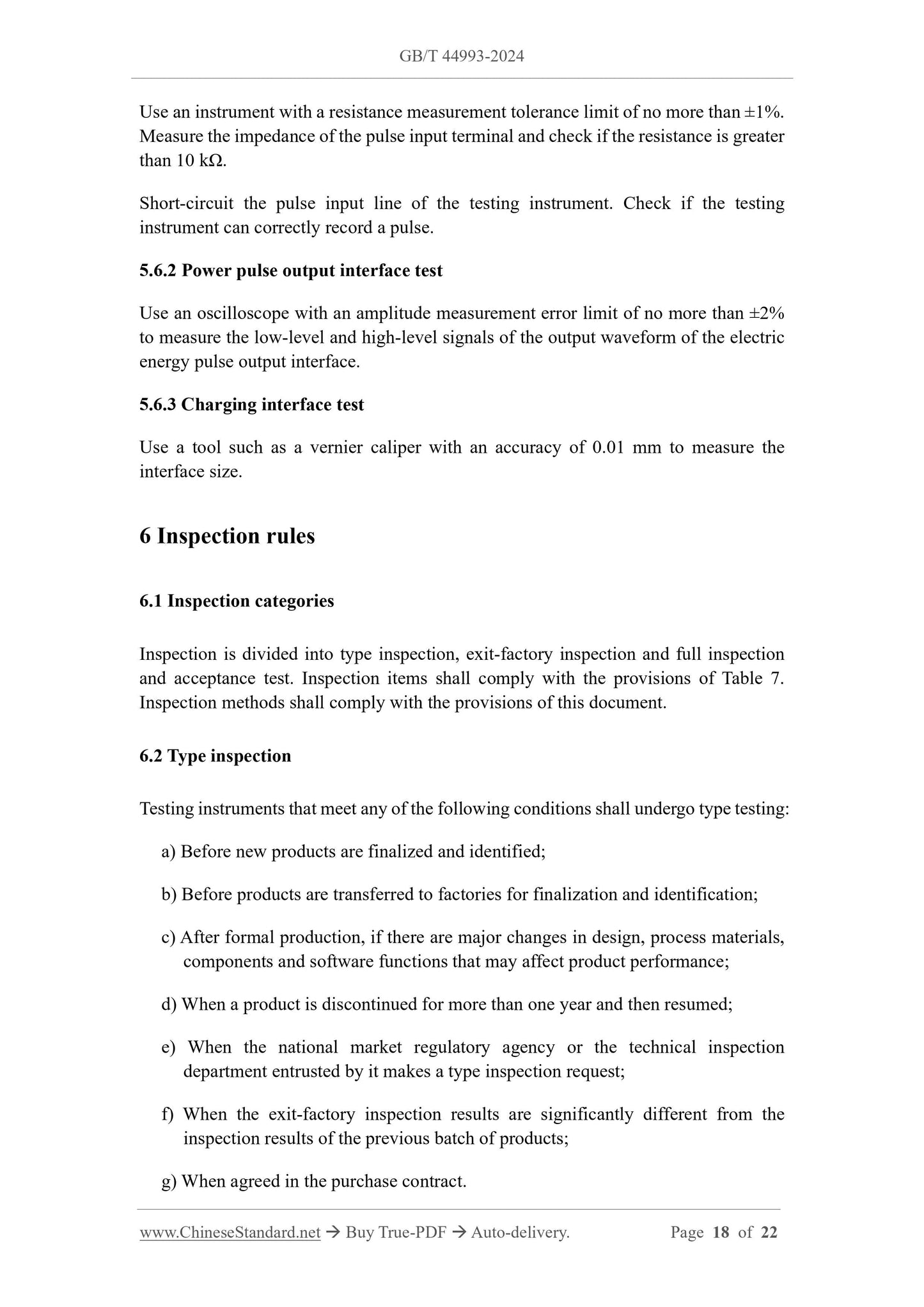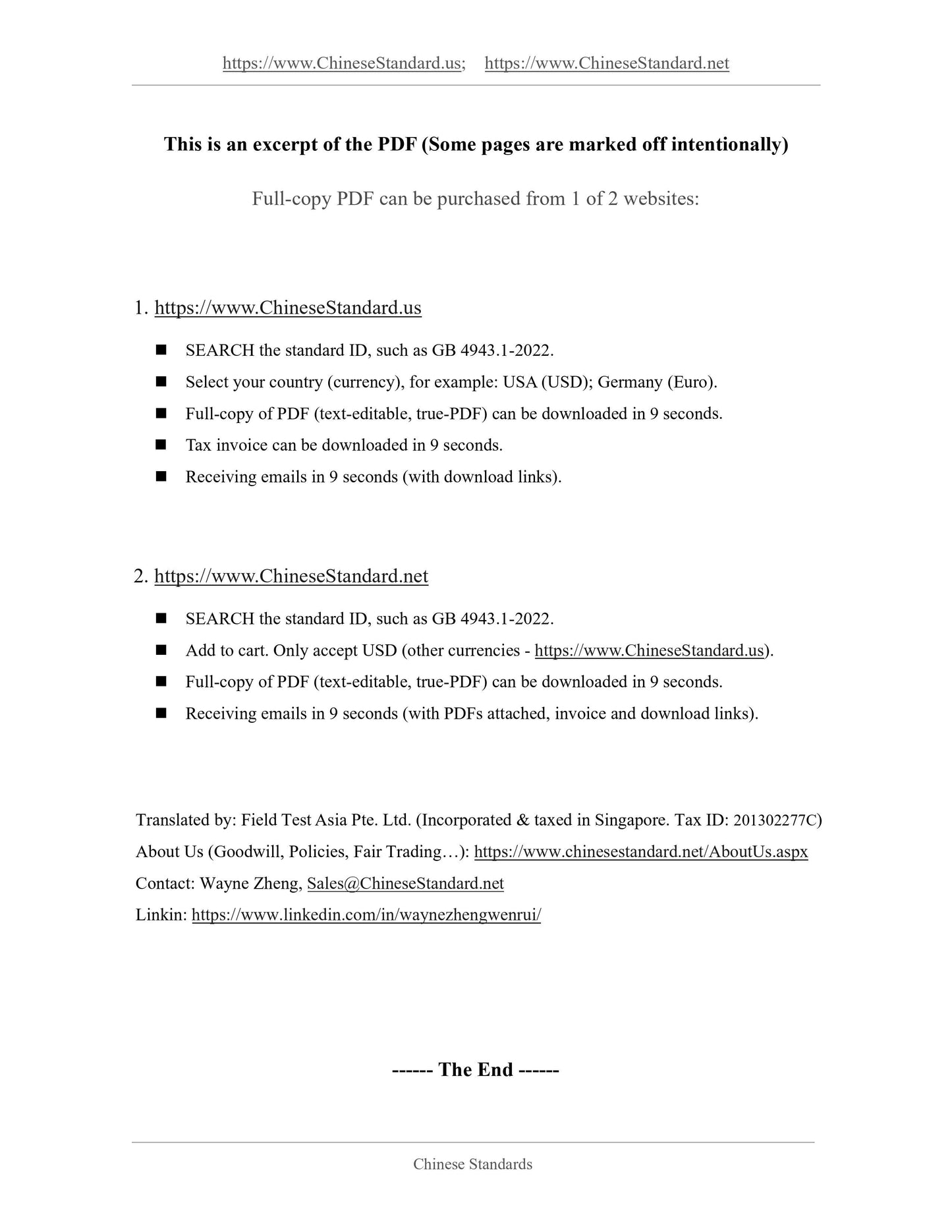1
/
of
10
www.ChineseStandard.us -- Field Test Asia Pte. Ltd.
GB/T 44993-2024 English PDF (GB/T44993-2024)
GB/T 44993-2024 English PDF (GB/T44993-2024)
Regular price
$320.00
Regular price
Sale price
$320.00
Unit price
/
per
Shipping calculated at checkout.
Couldn't load pickup availability
GB/T 44993-2024: On-site testing instruments of off-board charger for electric vehicles
Delivery: 9 seconds. Download (and Email) true-PDF + Invoice.Get Quotation: Click GB/T 44993-2024 (Self-service in 1-minute)
Newer / historical versions: GB/T 44993-2024
Preview True-PDF
Scope
This document specifies the terms and definitions, technical requirements, test methods,inspection rules and packaging, transportation and storage requirements for on-site
testing instruments of off-board charger for electric vehicles.
This document applies to the design, manufacture, procurement and acceptance of on-
site testing instruments of off-board charger of 1000 V and below.
Basic Data
| Standard ID | GB/T 44993-2024 (GB/T44993-2024) |
| Description (Translated English) | On-site testing instruments of off-board charger for electric vehicles |
| Sector / Industry | National Standard (Recommended) |
| Classification of Chinese Standard | N29 |
| Classification of International Standard | 17.220.20 |
| Word Count Estimation | 18,153 |
| Date of Issue | 2024-12-31 |
| Date of Implementation | 2025-07-01 |
| Issuing agency(ies) | State Administration for Market Regulation, China National Standardization Administration |
Share
